Every year, the fab Raquel at Out of the Past issues a Summer Reading Challenge, the goal of which is to read six books related to classic film. (See details HERE.)
Turns out we have a gazillion unread books on Old Hollywood. Thanks to Raquel, we’ve cleared up some of our reading backlog – and became more of a Classic Film Smarty Pants.
Here are the books we read, and now our head hurts.


“[A] well-documented source of who wore what when,” says Vogue.
Indeed. Although Hollywood Jewels: Movies, Jewelry, Stars is filled with gorgeous photographs, it’s also a terrific resource on the jewellery of classic Hollywood and its influence on American fashion.
Did you know, for example, women in the 1930s wore gold during the day and platinum in the evening? We didn’t either, and now we have to re-organize all our jewels.
The book contains an entire chapter on Elizabeth Taylor’s jewellery, calling it “the most exceptional jewellery collection ever assembled by a Hollywood star.” No other collection in the book is given such breathless attention; however, the collections of Joan Crawford and Gloria Swanson are a distant second.

Speaking of Gloria Swanson…

“In the summer of 1939,” writes Gloria Swanson, “I bought a new hat and went to California to cry at my daughter’s wedding.”
Swanson on Swanson is an utterly engaging memoir. Swanson is like a colourful, eccentric relative about whom you’ve heard your whole life, and when you finally meet her in person, you are not disappointed.
Swanson is most famous today for her role as Norma Desmond in Sunset Boulevard (1950), but she was also a wildly popular film star in the 1920s.
The stories! Swanson regales us with witty and shrewd observations about her clothes, her travels and her Hollywood cohorts, such as director Cecil B. deMille. (“He wore his baldness like an expensive hat,” she says, “as if it were out of the question for him to have hair like other men.”)
Swanson on Swanson is bursting with amusing anecdotes. Perhaps events didn’t unfold exactly as Swanson has portrayed them, but with stories like these, who cares?

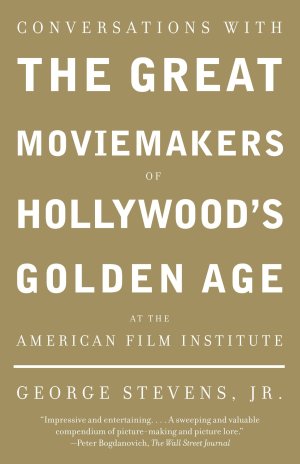
This is one of the best, most comprehensive books we’ve ever read on Classic Hollywood filmmaking.
Moviemakers of Hollywood’s Golden Age is a series of discussions with directors, cameramen and producers, including Billy Wilder, James Wong Howe, Federico Fellini and Alfred Hitchcock. The conversations transcribed in this volume were held at the American Film Institute (AFI) from the late 1960s to the early 1980s.
It’s a chunky book. Filmmakers give us heaps of valuable information, such as How To light a scene, organize a shoot and deal with actors. It’s like an intense Film Studies program.
If you have an interest in making movies, we urge you to get this book. It’s an incredible resource.

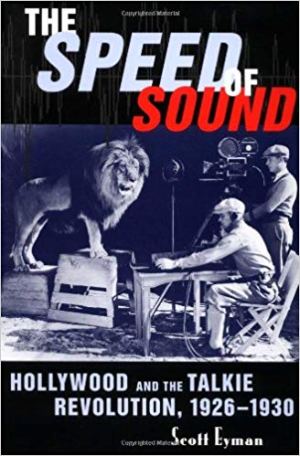
“Sound changed everything,” writes Scott Eyman. “It changed how movies were made, of course, but more importantly, it changed what movies were.”
The Speed of Sound: Hollywood and the Talkie Revolution 1926-1930 by Scott Eyman is a well-researched and sympathetic examination of Hollywood’s transition to sound. Eyman puts this transformation into perspective and shows us what a Game Changer it was.
He also explains how difficult it was to make movies during this tumultuous period.
“This was madness, life in movie-making hell,” he writes. “That any good movies were made at all amid such conditions of physical claustrophobia, narrative obfuscation, and an unimaginably confusing technical nightmare of crossed cables and purposes was a heroic feat.”

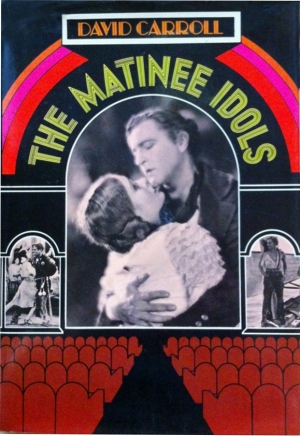
We’re not sure when the term Matinee Idol originated, but author David Carroll says by the early 1800s, theatre audiences were paying more attention to actors than material. It also became evident melodrama was ideal for some of these thespians.
“Melodrama was a perfect medium for the beautiful but untalented actor,” he notes, “an ingenious invention that used action-packed stories and heaps of candied romance to conceal the idol’s inability to act.”
The Matinee Idols discusses (1) idols of the stage, who were supplanted by (2) idols of the screen.
Carroll discusses the cultural impact of Rudolph Valentino and the tragic end of John Barrymore, as well as the enduring screen influence of Douglas Fairbanks.
“This was Fairbanks’ ultimate magic,” he writes, “he sold himself as a typical American male and then made this American male into a demigod, thereby flattering a nation by making the normal seem extraordinary and the super normal seem ordinary.”

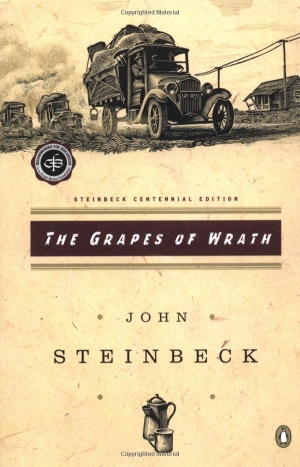
“‘I’m learnin’ one thing good,’ she said. ‘If you’re in trouble or hurt or need – go to poor people. They’re the only ones that’ll help – the only ones.'”
So says Ma Joad, the matriarch of the Joad family in John Steinbeck’s classic novel, The Grapes of Wrath.
The Joads are sharecroppers, booted off their land in Oklahoma, making a desperate trek to California to find work. When they arrive in the land of plenty, they discover migrant workers are second-class citizens, subject to cruelty and corrupt hiring practices.
The novel Created An Uproar when first published; it had a polarizing effect on Americans.
According to Martin Shockley in American Literature, XV (January, 1944), “the Associated Farmers of Kern County, California, denounced the book as ‘obscene sensationalism’ and ‘propaganda in its vilest form'”. However, says Shockley, “With such publicity, The Grapes of Wrath sold sensationally in Oklahoma bookstores.”
The 1940 film adaptation of the novel, starring Henry Fonda, won two Academy Awards.

Now. What did you read this summer?









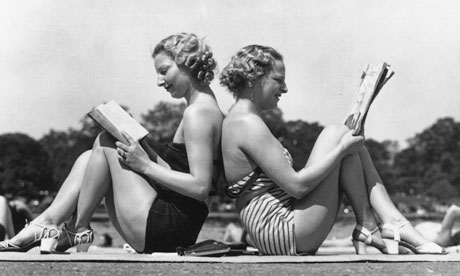








Holy moly what a fantastic wrap-up! Seriously, after reading this post, I want to get my hands on every single one of these! Mind you, I already own two of them: Swanson on Swanson and The Grapes of Wrath. The fact that I haven’t read them yet is such a shame 😦
LikeLiked by 1 person
No shame – just great reading ahead. 🙂 Of all the books I read this summer, I enjoyed Gloria Swanson’s the most. I could hardly put it down!
LikeLike
Right – you’ve convinced me! I need to read that one next, I think. I’ve had it sitting on my shelf for over a year now 😦 I’ve heard nothing but great things about it, though, so i can’t understand what’s taken me so long to pick it up! I think its size intimidates me.
LikeLiked by 1 person
Okay. I’m scrapping the entire Christmas wish list and starting over.
I haven’t been an extraordinary reader this summer. I simply kept Conan Doyle by my side, in my purse, or in my tote bag.
LikeLiked by 1 person
Haha! So many books, so little time, right?
As for Conan Doyle, he is always a welcome companion. Good choice!
LikeLike
Swanson on Swanson is glorious. I read a John le Carre that hasn’t been made into a film…yet. It’s the third part in the Tinker, Tailor books that winds everything up after a fashion. It’s called A Legacy of Spies.
LikeLiked by 1 person
I haven’t yet read that John le Carré series, and I’m not sure why because I really enjoy his writing. Thanks for the recommendation. 🙂
LikeLiked by 1 person
I read a biography on Clark Gable, Kendra Bean’s books on Vivien Leigh and Ava Gardner, Elizabeth Taylor: My Love Affair with Jewelry and Dressed: A Century of Hollywood Costume Design.
I am currently working my way through About Face: The Life and Times of Dottie Ponedel. You managed to read several intriguing sounding books. Guess I’ll be adding to my TBR pile.
LikeLiked by 1 person
Your books sound fascinating, too! I have my eye on the Dottie Ponedel bio and might add it to my next online book order. Also, that book on Hollywood costume design sounds like a Must Read.
LikeLike
Swanson on Swanson sounds like a good read!
LikeLiked by 1 person
It’s a really good read. I think a person would enjoy it even if they weren’t familiar with her career. Her writing is quite vivid.
LikeLiked by 1 person
The only one of these books that I’ve read is Grapes Of Wrath. A very great novel.
Swanson’s quote about DeMille is hilarious!
I enjoyed your essay a lot.
Take care —
Neil S.
LikeLiked by 1 person
Thanks so much! Yeah, The Grapes of Wrath is powerful, isn’t it? No wonder it caused such a stir when it was first released.
LikeLiked by 1 person
“The Grapes of Wrath” is one of those books that has always stuck with me – especially the ending! Great list – will have to try to work a few of these into my ever-growing reading list.
LikeLiked by 1 person
Oh yeah, I know what you mean about the ending to “The Grapes of Wrath” (the book). I did NOT see that coming.
LikeLiked by 1 person
Right?!
LikeLiked by 1 person
It’s been a while since I read it, but ‘Creativity Inc’ about Pixar is a great book 🙂
LikeLiked by 1 person
Sounds good. Thanks for recommending – I hadn’t heard of it before.
LikeLiked by 1 person
“Moviemakers of Hollywood’s Golden Age” sounds like a terrific read! I don’t read any books on classic movies this summer, but did enjoy “Sitcom Writers Talk Shop,” another collection of interviews and featuring Carl Reiner, Norman Lear, James L. Brooks, and others.
LikeLike
I “didn’t read” any books… (What do I always see typos right after I click “post comment”?)
LikeLike
Thanks for a list of some intriguing movie books. A couple of them I’ve read but most were new to me. I’m interested in the book on the switch to sound and matinee idols and one or two others. Currenly I’m reading a thick and interesting bio of Peter Lorre.
LikeLike
I want to read all these books, and I’ve already read Graps of Wrath. In fact, quite a few of his works. The Swanson book sounds fantastic.
LikeLiked by 1 person
The Gloria Swanson book is really entertaining. I could hardly put it down! It’s a long read, but well worth it.
LikeLike
It never feels long with the right ones 🙂 Thanks for the recommendations
LikeLiked by 1 person
Hello! Great picks here and hope you had a lovely summer.
LikeLiked by 1 person
Thanks! Yes, it was a terrific summer, with lots of activity – and lots of reading jammed in here and there. How was your summer?
LikeLiked by 1 person
Er… Could have been better. But, hell, could have been worse. So happy to hear of your summer though. Makes me smile. 🙂 Missed you.
LikeLiked by 1 person
Swanson on Swanson sounds awesome! I always loved Gloria Swanson’s individuality and guts and of course, I think she should have won the Oscar for Sunset Boulevard :-).
As for my summer reading, I’m an avid reader but here are the books I read that have been made into classic films:
The Magnificent Ambersons
The Bat
Tam May
The Dream Book Blog
https://thedreambookblog.workdpress.com
LikeLiked by 1 person
I think you’d really get a kick out of Gloria Swanson’s memoirs. The stories are terrific, and the writing is quite personable.
How did you find The Magnificent Ambersons, the book?
LikeLike
Congrats on reading all 6 books! And I love how you describe Swanson on Swanson. Spot on!
LikeLiked by 1 person
Thanks! I wasn’t sure I could read all 6 books, but – darn it! – I really wanted to say I completed the challenge.
As for Gloria Swanson’s book, I don’t know why it took me so long to read it.
LikeLike
Swanson on Swanson is almost too much fun to worry about what is true and what isn’t!
I also own a copy of The Matinee Idols. Bought it too many years ago to remember where it came from, but it is a neat little book.
LikeLiked by 1 person
Haha! You said it (re: Gloria Swanson’s book).
Matinee Idols is a really interesting read, isn’t it?
LikeLike
Don’t you love how when something is a challenge we do it…hahaha
LikeLiked by 1 person
You know it! And doesn’t it feel good when a challenge is completed! 🙂
LikeLiked by 1 person
Oh definitely!
LikeLike